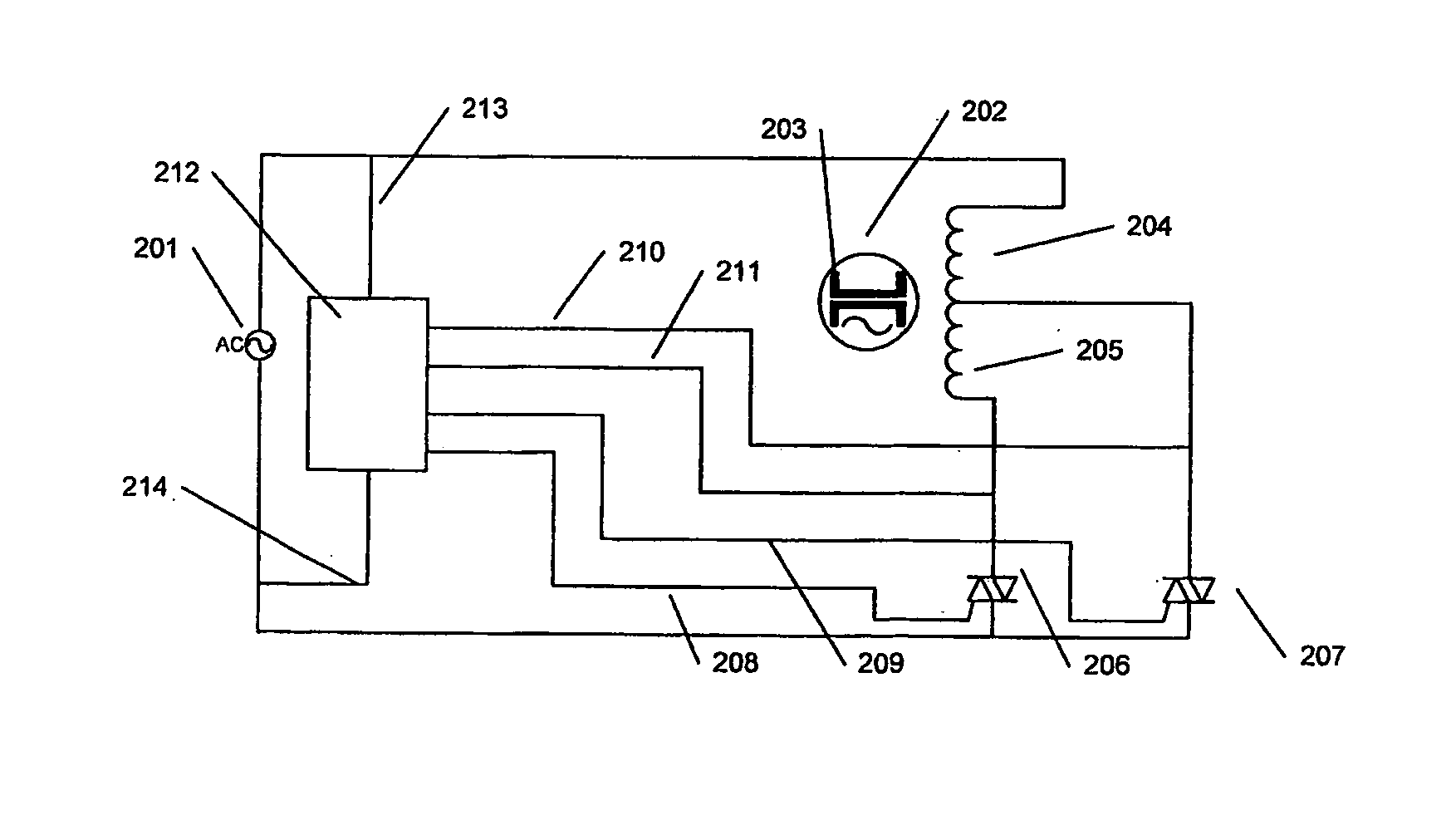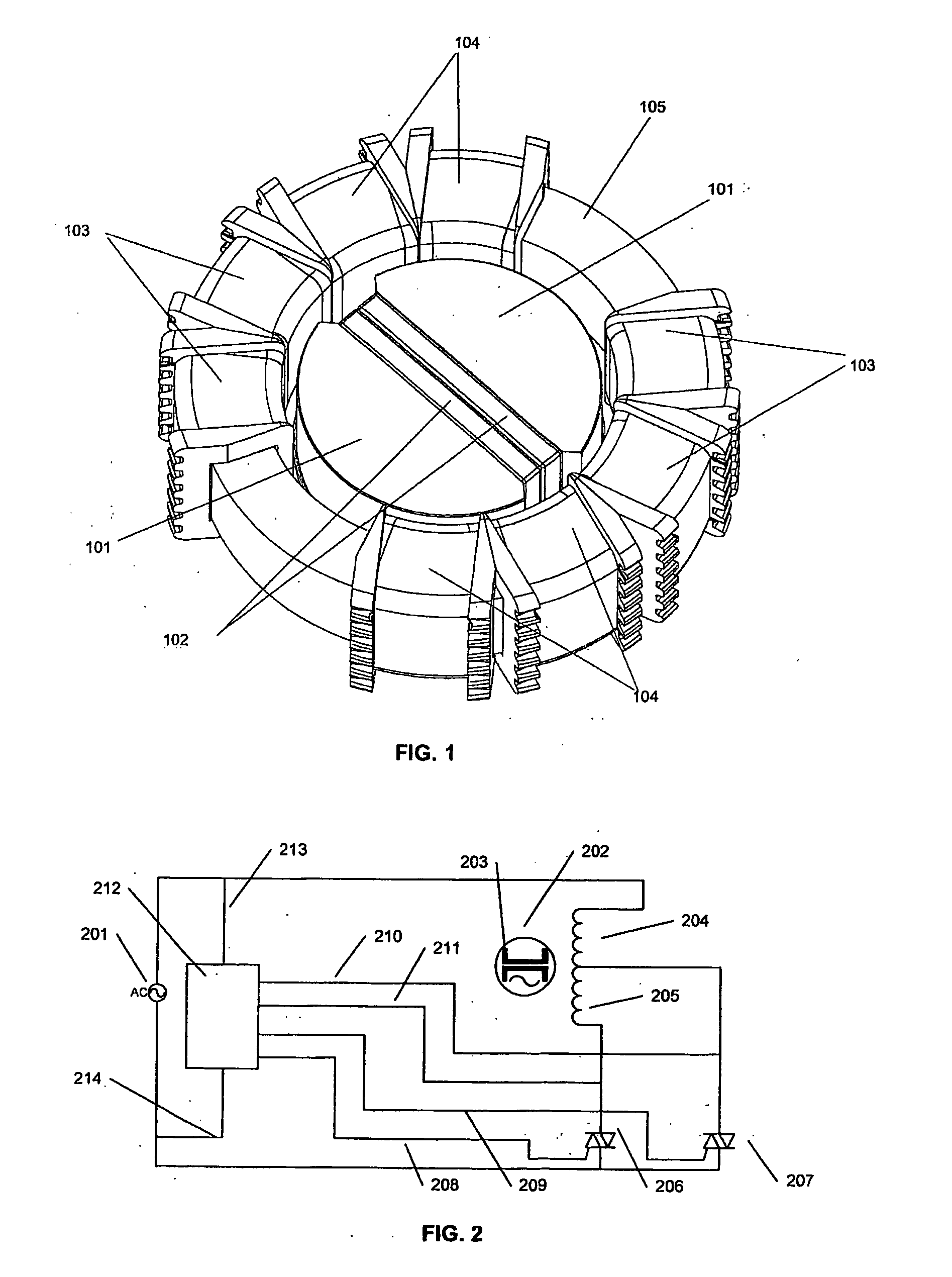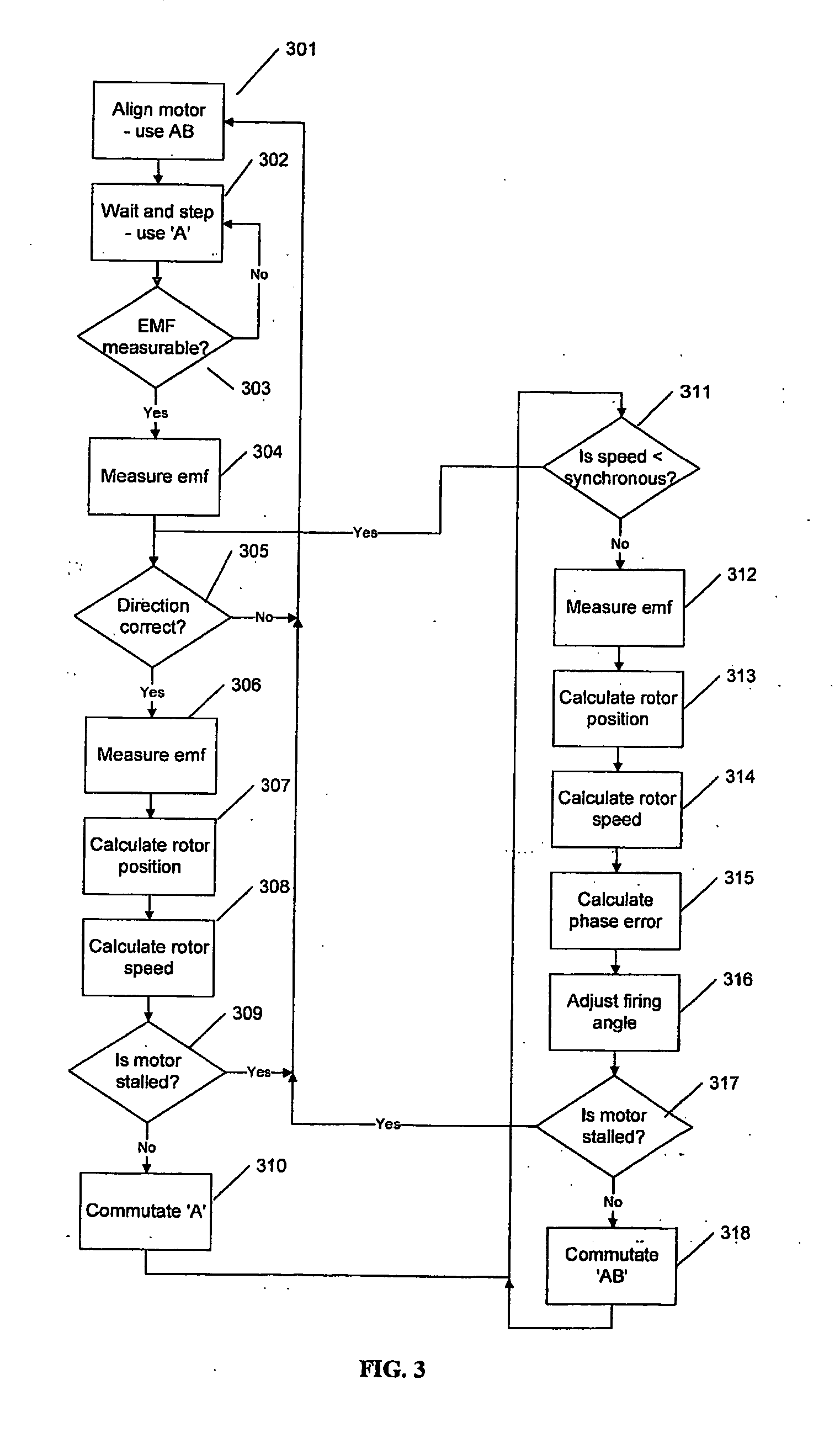Control of synchronous electrical machines
a synchronous motor and electrical machine technology, applied in the direction of dynamo-electric machines, single motor speed/torque control, synchronous motor starters, etc., can solve the problems of difficult starting of such motors, limited control of starting direction and torque, and difficulty in determining the starting direction of synchronous motors
- Summary
- Abstract
- Description
- Claims
- Application Information
AI Technical Summary
Benefits of technology
Problems solved by technology
Method used
Image
Examples
Embodiment Construction
[0045]Referring now to FIG. 1 a synchronous motor consists generally of a rotor with pole pieces 101 and magnets 102, the axle shaft and driven connection of the rotor not being shown.
[0046]Stator 102 consists of a back iron 105, which is a toric magnetic element such as laminated steel; and wire wound bobbins 103, 104 where the bobbins form a winding on each pole of the motor, the bobbins forming a first winding of bobbin 103 and a second winding of bobbins 104, and the windings in total do not subtend the full circumference of the stator. The windings on the bobbins on each side consist typically of a single wire continuously wound along all four bobbins, but extending to a tap point located in the grooves on the bobbin cheek. There may be a tap point between each pair of bobbins or only one tap point may be present located between bobbins 103, 104. Typically the windings on each pole of a single phase machine may subtend from 120 to 135 degrees.
[0047]A single phase AC supply is c...
PUM
 Login to View More
Login to View More Abstract
Description
Claims
Application Information
 Login to View More
Login to View More - R&D
- Intellectual Property
- Life Sciences
- Materials
- Tech Scout
- Unparalleled Data Quality
- Higher Quality Content
- 60% Fewer Hallucinations
Browse by: Latest US Patents, China's latest patents, Technical Efficacy Thesaurus, Application Domain, Technology Topic, Popular Technical Reports.
© 2025 PatSnap. All rights reserved.Legal|Privacy policy|Modern Slavery Act Transparency Statement|Sitemap|About US| Contact US: help@patsnap.com



